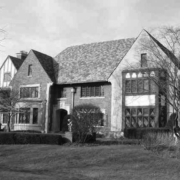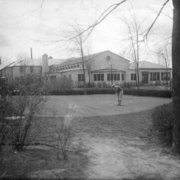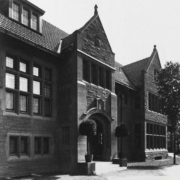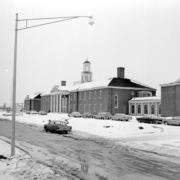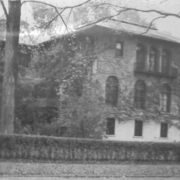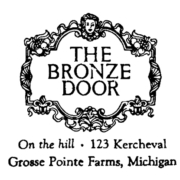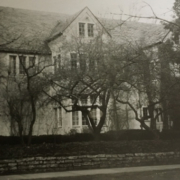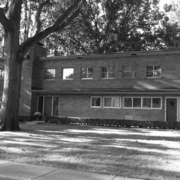Historical Architecture of Grosse Pointe – 740 Whittier
Last week we were in Grosse Pointe Park to present the story of 607 Lakepointe, designed by Richard H. Marr in 1938 for Dr. J. Edgar Norris, chairman of Pathology and acting dean of the Wayne State University College of Medicine. 607 Lakepointe was featured in a 1938 edition of the Detroit Free Press as their ‘East Side Home of the Week’. The Detroit Free Press ‘East Side Home of the Week’ created ‘an opportunity to acquire many ideas which may be incorporated in homes large and small’. This week we stay with the work of Richard H. Marr, as we explore one of his most distinguished projects, 740 Whittier, completed in 1933 for Detroit’s “Aluminum King” C. B. Bohn, president of Bohn Aluminum and Brass Corporation.
Richard H. Marr, known in the 1920’s as the ‘Architect of Midwest Millionaires’, created numerous grand residences for some of Detroit’s wealthiest families. Much of his work during this era was in the Tudor revival style. At its height of popularity in the 1920’s, the Tudor style required skill by the architect to reproduce the typical characteristics in the right proportions to create the charm associated with this approach. Given Marr’s skill at designing magnificent Tudor residences, and for creating something special, 740 Whittier combines charm and beauty, along with meticulous attention to detail. Image courtesy of Realtor.com

740 Whittier is a 6,842 sq ft residence located on the shores of Lake St. Clair on a massive 1.7-acre lot. It is believed Richard Marr used inspiration from Europe and America, integrating many handsome features into the design. The property has been described as having ‘two fronts’, one facing the street, the other facing the lake and the garden – filled with elms, willows, maples, and stunning flower gardens. The property is constructed from brick and Gothic Indiana limestone and has a steeply pitch slate roof. The design incorporates traditional stucco sections that are associated with the Tudor style – stucco walls with decorative wood half-timbering – on both the front and the rear elevations. The two gables on either side of the entranceway are the locations of the decorative two-story window(s). The front door, framed by limestone, is hand carved oak, while the door at the rear of the property is said to be architectural bronze and plate glass.
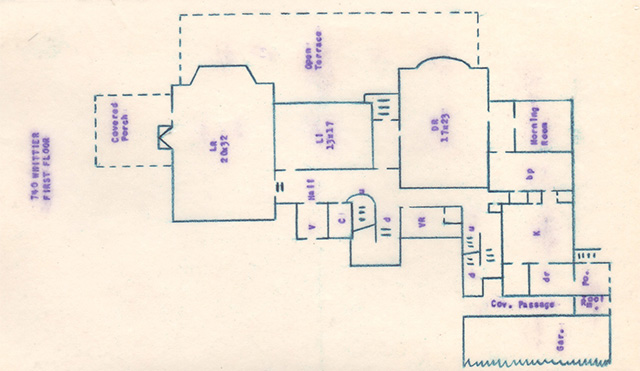
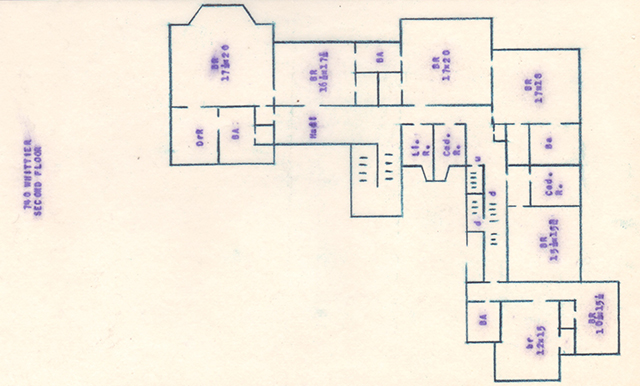
The interior was created by some of the leading interior designers of the era. There is an abundance of beautiful hand carved woodwork throughout. Much of the wood found in the home (the floors and the paneled walls) is white oak. The first floor has several large main rooms, along with a dining room for servants, a butler’s pantry, and a service porch. The long, narrow 26’ x 12’ sq ft reception hall has a marbled floor and a wide quartered oak staircase, the stair rail and newels are artistically hand carved from white oak. On the landing is a stunning stained-glass window. Courtesy of the Library of Congress, the image below depicts ‘a romantic medieval lady with headdress, crenellated castle and fleur-de-lis’. It was designed by J&R Lamb Studio’s – founded in 1857, the studio is the oldest continuously operating facility in the United States.
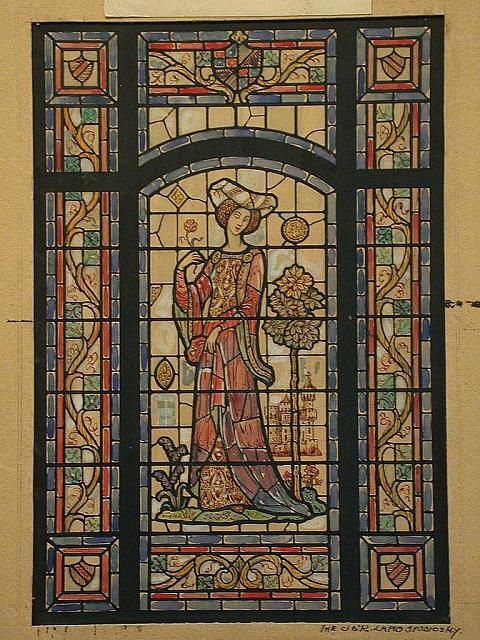
The 20’ x 32’ sq ft living room has white oak paneled wainscoting, ceiling beams in cast plaster, and superb hand carved wooden detailing on the mantel panels and radiator grills. The 13’ x 17’ sq ft library and the 17’ x 23’ sq ft dining room are also richly decorated with wood. The dining room, Italian in its design, has walnut wainscoting, and a beamed ceiling in cast plaster hand painted in striking colors. Beautiful arches lead to the morning room and the garden hall, with its bronze and plate glass door leading to the garden and facing the lake.
The second floor includes five large bedrooms, each exquisitely decorated in a distinctive color. The 20’ x 18’ sq ft master bedroom has a vaulted ceiling, while a large bay window provides a stunning view of the lake. It is reported the overall design of the master bedroom was created to compliment the effect the natural light has on this room. Edward F. Caldwell & Co. of New York is believed to have designed the light fixtures in this room, and throughout the home. Meanwhile, each of the four bathrooms, tiled on the floor and ceiling, are fitted with opulent fixtures and fittings. There were originally two additional bedrooms and a bathroom for servants.
Finally, we reach the basement and the lavish games room. At approximately 27’ x 31’ in size the games room originally had a marble floor, while the side walls were decorated in black glass with an aluminum cornice and decorative strips. The room features a bar, liquor cases, and a refrigerator. The walls of the adjoining room were painted to represent a roof-garden in Paris, creating an illusion of a bird’s eye view of a section of the city, capturing boulevards with the Eiffel Tower in the foreground.
The original owner or 740 Whittier, C. B Bohn, commissioned Richard H. Marr to create a dream home on shores of Lake St. Clair. C. B. Bohn, known as Detroit’s “Aluminum King” was president of the Bohn Aluminum and Brass Corporation. It is believed the company was formed during the early 1920’s when the C. B. Bohn Foundry Company merged with the General Aluminum and Brass Company. From research on theoldmotor.com we understand the C. B. Bohn Foundry Company was located near the Packard Plant, supplying ‘high quality aluminum and brass specialty castings to Packard along with numerous automobile companies in the city’. After WWI the company began to grow quickly with plans to build two modern furnaces for melting and refining brass.
With Marr’s reputation for creating something special, along with C. B. Bohn’s desire for a dream home on the lake, 740 Whittier certainly fulfills the criteria. It is in an estate fit for a king, albeit an aluminum one.
*Photos courtesy of the Higbie Maxon Agney archives unless stated.
** Research, information, and data sources are deemed reliable, but accuracy cannot be fully guaranteed.
Written by Katie Doelle
Copyright © 2022 Katie Doelle

